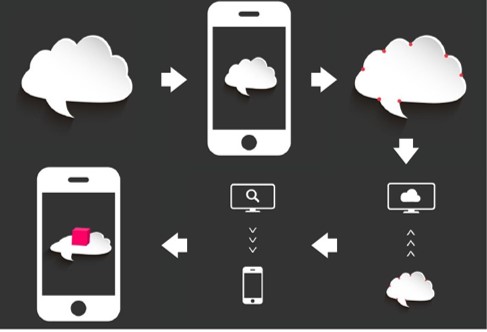Augmented Reality
Augmented Reality (AR) is an interactive experience of a real-world environment whereby the objects that reside in the real-world are "augmented" by computer-generated perceptual information, sometimes across multiple sensory modalities, including visual, auditory, haptic, somatosensory, and olfactory.

AR
AR principle

Scene analysis
- AR browser analysis scenario
Image matching
- Trigger clouds to corresponding AR content
AR fusion
- AR browser blends reality scenes and virtual content
AR Interaction
AR is developed with Unity 3D professional engine. By using smart devices (iPad, Android Pad, iPhone, On-desk phone, large screen, etc.) to scan a single page and other identification maps, AR can combine real objects and virtual objects with the user environment. It makes real-time interaction and seamless integration between virtual and reality.
The technical advantages of new features of seamless integration between virtual and reality, real-time interaction and 3D registration are more obvious than VR. It plays an important role in the field of an exhibition, marketing, science & education, and entertainment.
AR application
To add 3D products, project videos, etc. on the project leaflet to show overall planning (3D all-round display), building unit (stereo all-round display), apartment display (axial test all-round display, roaming or fixed point 720), landscape and commercial display (roaming or fixed point 720).
AR product advantages
- AR is a kind of high-end marketing product that enhances user experience. It brings perfect combination between interactive entertainment communication and project value which is a subtle flexible marketing.
- AR is a must-have sales tool for marketing, exhibition, and sales office. It uses a simple combination to create a high-end brand image.
- Convenient accessibility to facilitate social sharing.






















